- 21 December 2016
- Michael McGrath
Busting popular myths surrounding the Australian way of life.
As we come to the end of another year, like us you are probably wondering where the time went. Whilst the world may appear more uncertain as we continue to be bombarded by bad news, we thought you might enjoy some much needed positive news.
Phil Ruthven, the founder of IBIS World recently sent out an article which we think brings some evidence-based perspective, debunking myths on various topics such as, crime, inequality, the ageing population and marriage… it turns out we might not be doing as badly as some would have us believe! We love the power of data and research at Oasis and hope you enjoy this short article as much as we did – 5 minutes well spent.
Have a great Christmas and happy, healthy, prosperous and safe new year.
Mike and the Oasis Team

Myth 1: Marriages don’t last as long as they used to
Not true, the average length of a marriage has stayed around 20 years for three centuries. The fact that there are more divorces and separations these days is that we live over twice as long as people did in the early 1800’s (when the average lifespan was 38 years), and have time for a trade-in, if you have a mind to. In the olden days, you got married at 18, lived another 20 years together and then went to God before you were 40, on average. There just wasn’t enough time for a divorce.
Myth 2: Crime is on the rise, especially murders
No it isn’t. Not only is the murder rate in Australia one of the world’s lowest, at under two per 100,000 each year, but it has fallen to record lows over the past five years.


Myth 3: Speeding is the number one cause of road-based deaths
No, things like distractions, falling asleep and intoxication are. Speed is usually somewhere around the 2nd to 4th most common cause.
Myth 4: We need a big population to compete in a globalising world
No we don’t. Some 18 of the world’s 20 highest standard of living countries have a population lower than Australia’s 24 million, and most are less than a third of our population. Only the US and Germany are more populous countries in the top 20.


Myth 5: Australia’s population is getting to the limit of our carrying capacity
That’s good for a laugh right around the world, especially in high-density Asia. Our population is so thin we could only just touch hand-to-hand around the coastline. Indonesia’s population, on a fraction of our land, could do so 11 deep, and China with only a slightly bigger land mass than us could be 52 deep. On our present growth rate, we will have a population of over 40 million in 2050, and over 75 million by 2100, and still have one of the world’s lowest population densities.
Myth 6: Immigrants take our jobs
No they don’t. They more often take jobs we don’t like. And if a migrant family arrives, they create demand for more jobs than they can fill for at least five years, in terms of the necessary infrastructure and annual consumption expenditure.


Myth 7: Australia will run out of workers due to the ageing population
No we won’t. Being too young a population, as we were in the 19th century, was a worse problem; and to get enough workers to support the population, we needed children to start work at under 15 years of age, often as young as 11 to 13. As this century unfolds, working beyond 65 and up to 75 or more – often in a part-time or casual basis – is realistic for a workforce that emphasises brains, not brawn. And the only way to wear the brain out is to stop using it.
Myth 8: There won’t be enough jobs due to technology, robots and artificial intelligence
Yes, there will be. We are good at creating jobs. Over the past five years we have created eight times more jobs than we have lost. Yes, eight times! There are millions of jobs in the making to replace those lost through new technologies and digital disruption, to be added to our current 12 million jobs.

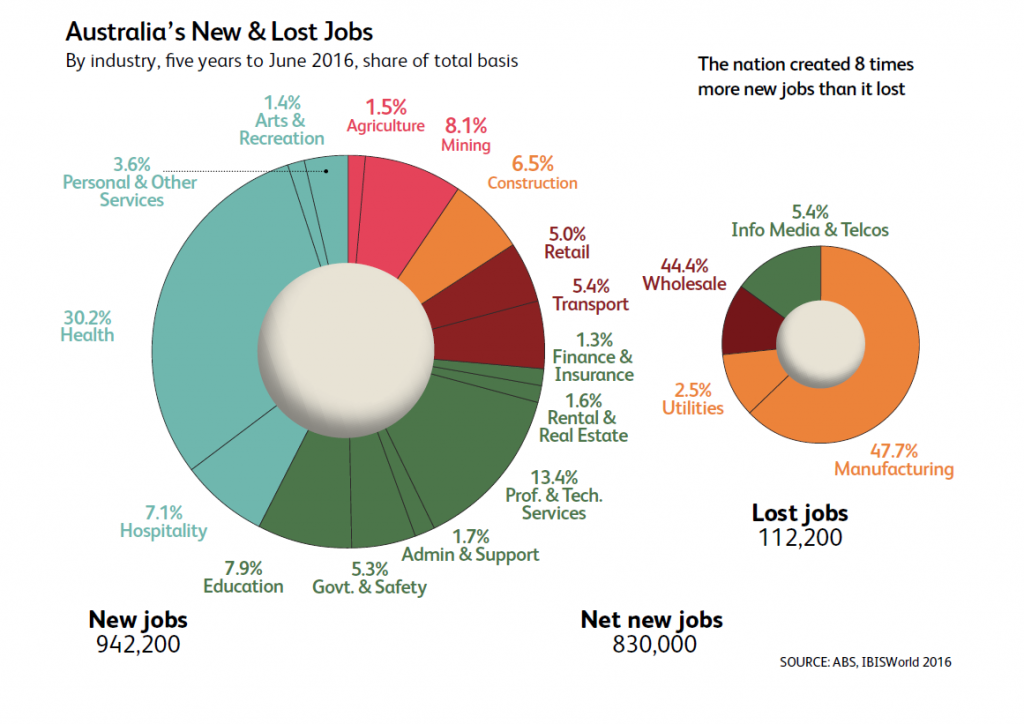
Myth 9: We are now working harder and with not enough time to scratch ourselves
Not true. For males in the year 1800, it used to be a 65-hour week for 25 years, starting at 13 years of age to complete 80,000 hours of paid work, only to die at an average age of 38. Now it is still 80,000 work hours in a lifetime, but at a pace of less than half those hours per week and for longer (more than 50 years); remembering we now have two months off a year through vacations, public holidays and sick leave. We have more discretionary and leisure time than at any time in history.
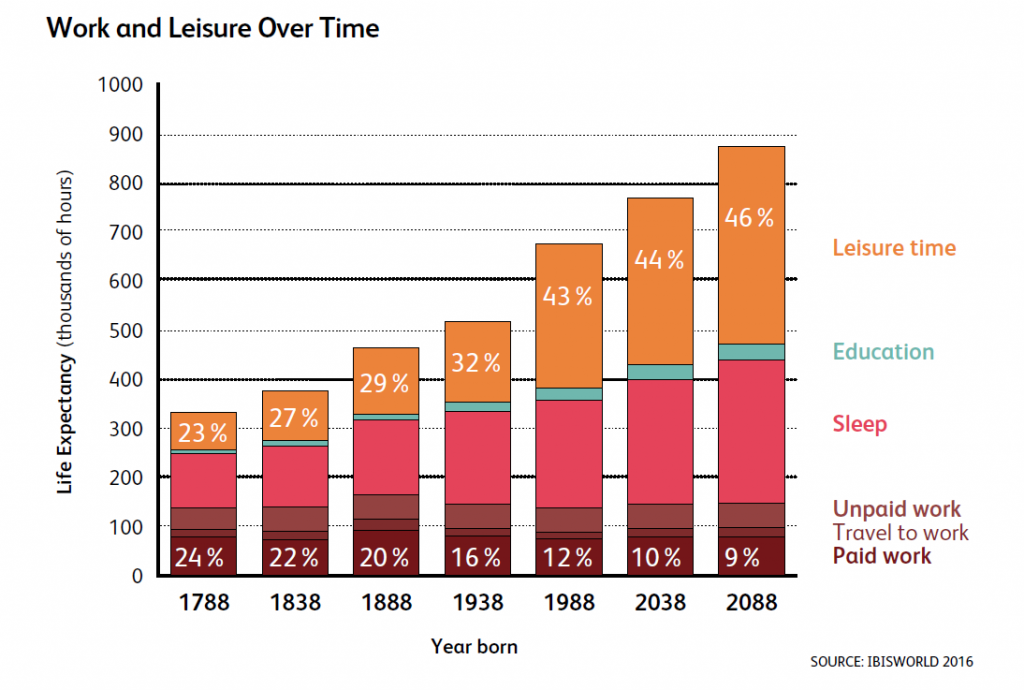
Myth 10: Housing is now dangerously unaffordable
It always was unaffordable for the newlyweds and the poor, so what’s new? Interestingly, the debt servicing ratio (interest payments as a share of disposable income) for mortgage and other debt is currently at the lowest rate in four decades.
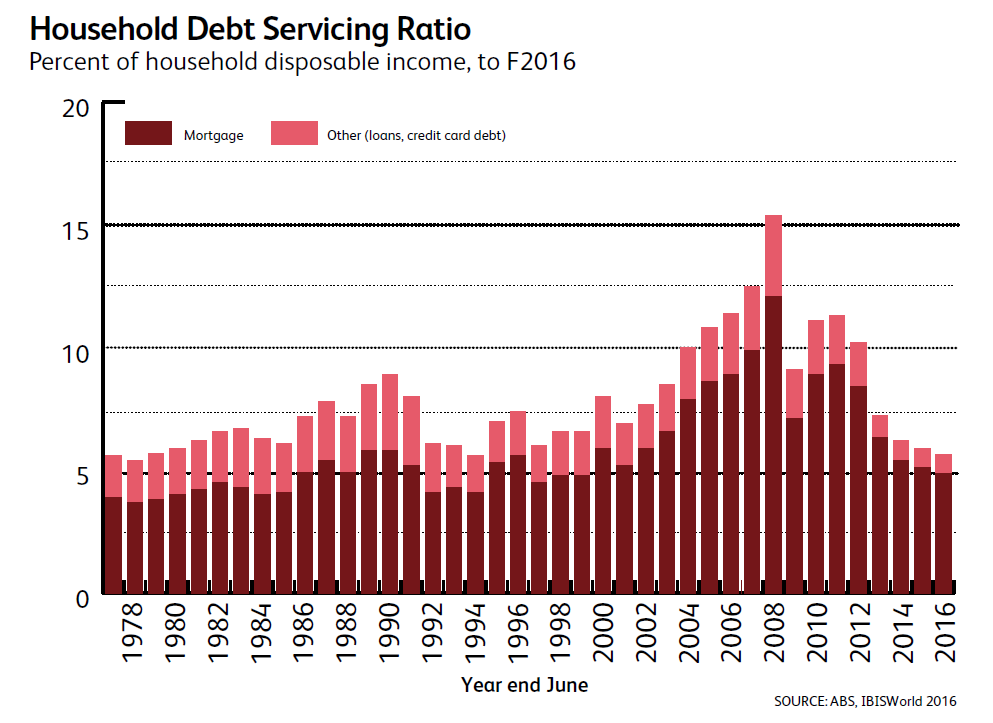

Myth 11: The rich are getting richer while the poor are getting poorer
No they aren’t; there has been hardly any change since the beginning of our new century here in Australia.
Myth 12: We are too-highly taxed
No we aren’t. This is one of the most pernicious lies being trundled out by both sides of politics in Australia: blatant scare-mongering and politicking. We are actually one of the lowest taxed developed nations at 28% of GDP. The average among develop countries is around 37% and many nations are nudging 50% of GDP.

Myth 13: We need to cut costs to balance the budget
Yes, let’s regress back to the days when there was no or inadequate support for single mums, the unemployed, the elderly, the disabled or other disadvantaged citizens. Let’s not stop till we get back to the ‘good old days’ when taxes were much lower and may the devil take the hindmost in terms of the people left behind. I don’t think so. But, yes, we should get better value for our taxes than we do. One-fifth of our GDP is produced by governments, and that sector’s productivity has been negative for decades.
Myth 14: The greatest mining boom in our history is now over
First, it isn’t our greatest boom: that was in the 1850s, when the industry reached almost 18% of our GDP – led by gold – versus the current one at just over half that share. And the boom isn’t over; production volumes are still growing and may do so well into the 2020s, but boom prices are over.
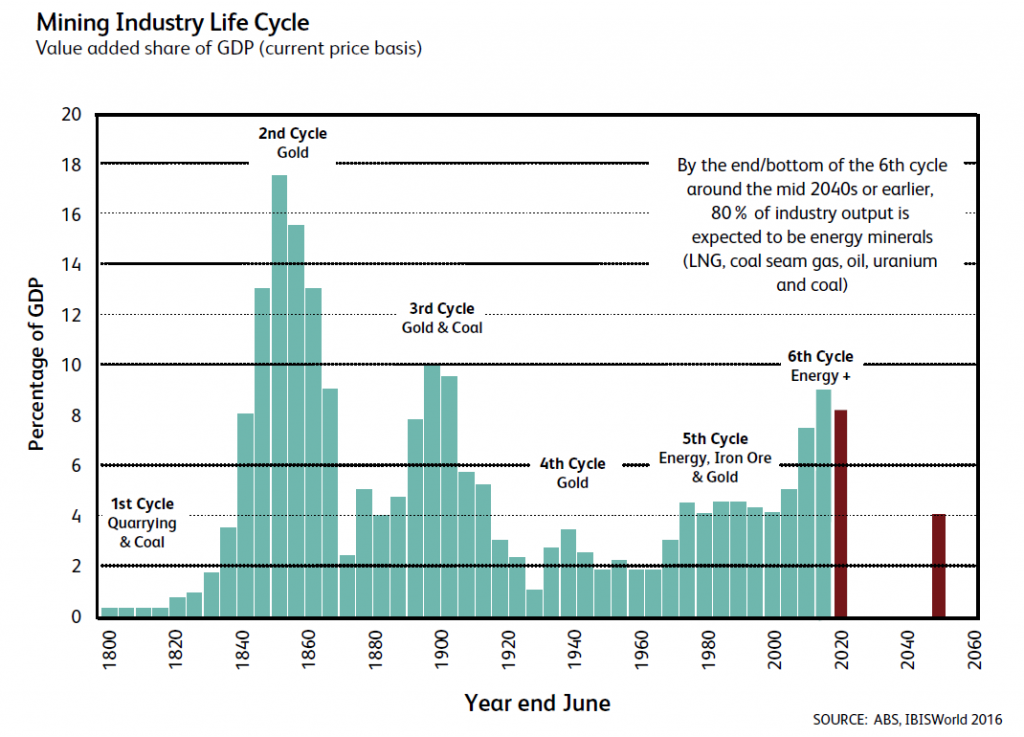
Myth 15: We need to create material things to create basic wealth
No we don’t. A wealth creating industry is one that produces products that customers and the market want and are prepared to pay for, regardless of if these products are goods or services. Agriculture, mining, manufacturing and construction are all service industries anyway. Humans didn’t create the raw materials on which they are based; God did and they are free. No one has ever been game to take credit for creating our natural resources, least of all economists and our Bureau of Statistics. The term ‘goods industry’ is a historical construct used to separate tangible from intangible products.
The economy and its wealth is built on value-adding, so wealth creation has only ever been the result of labour, depreciation of capital, indirect taxes and profit going into a product, not God-given free raw materials.
Agriculture these days creates just 2% of our GDP, and manufacturing less than 6%. In 1960, these two industries accounted for 38%, not 8%! Yet we have a standard of living nearly three times higher than at the end of the Industrial Age in the mid-1960s. If anything, it is our ‘service’ industries propping up some of the ‘goods’ industries in this new century.

Myth 16: Nuclear is the world’s most dangerous energy ever used
Wood probably kills more people per kW of energy produced (logging, chopping, asphyxiation, fire). Nuclear energy almost certainly has been the safest energy source on the basis of deaths per kW of energy.
Myth 17: Australia could become the food bowl of Asia
If only, but we don’t have enough water. That said, we will probably increase our output fivefold this century as we did in the 20th century, but that will only be enough to feed 5% of Asia’s population at the end of the 21st century.

But despite these myths, are things really getting better? You bet. Just look at our progress in the chart.
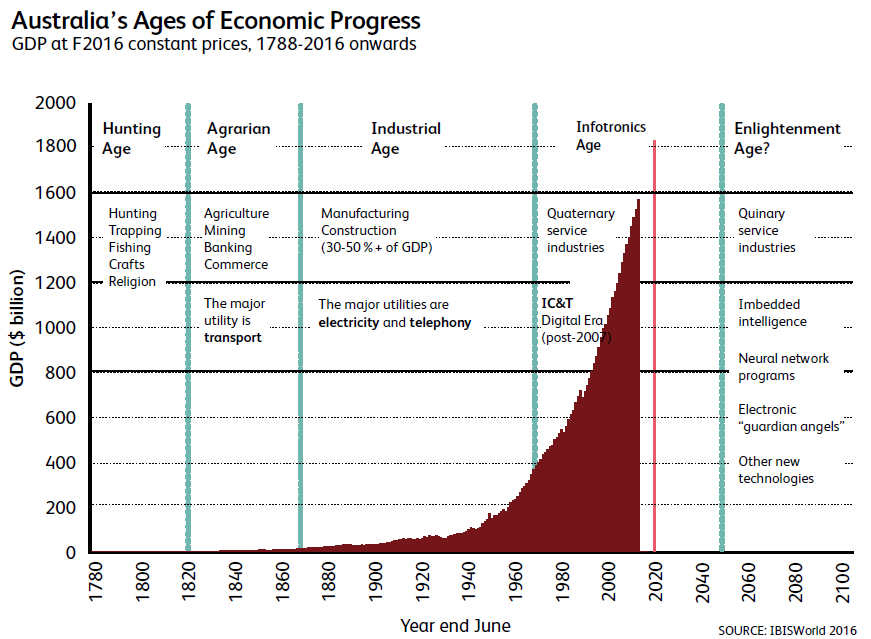
Reference:
Urban myths versus the right information
IBISWorld Newsletter, November 2016
Phil Ruthven AM, Founder IBISWorld

